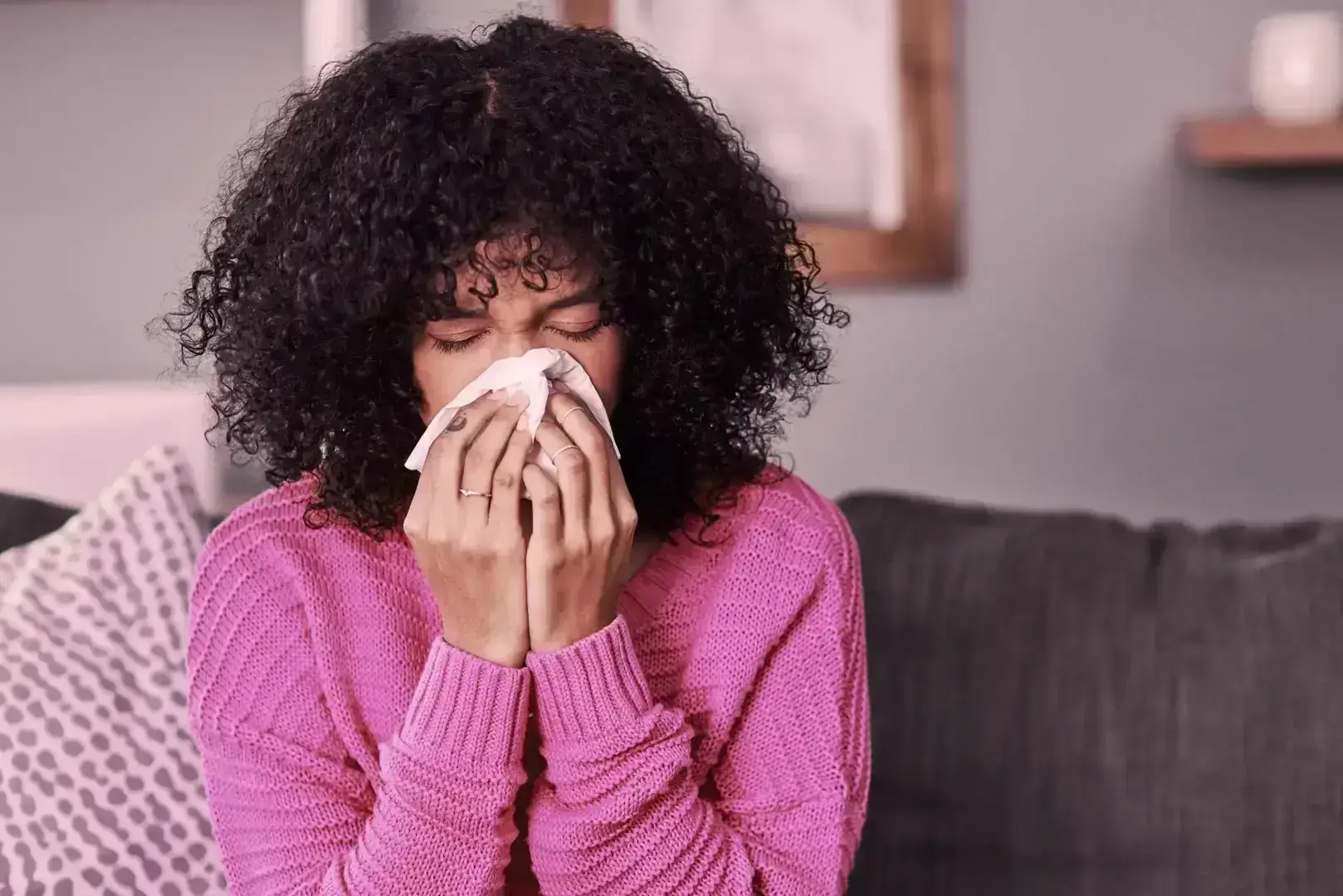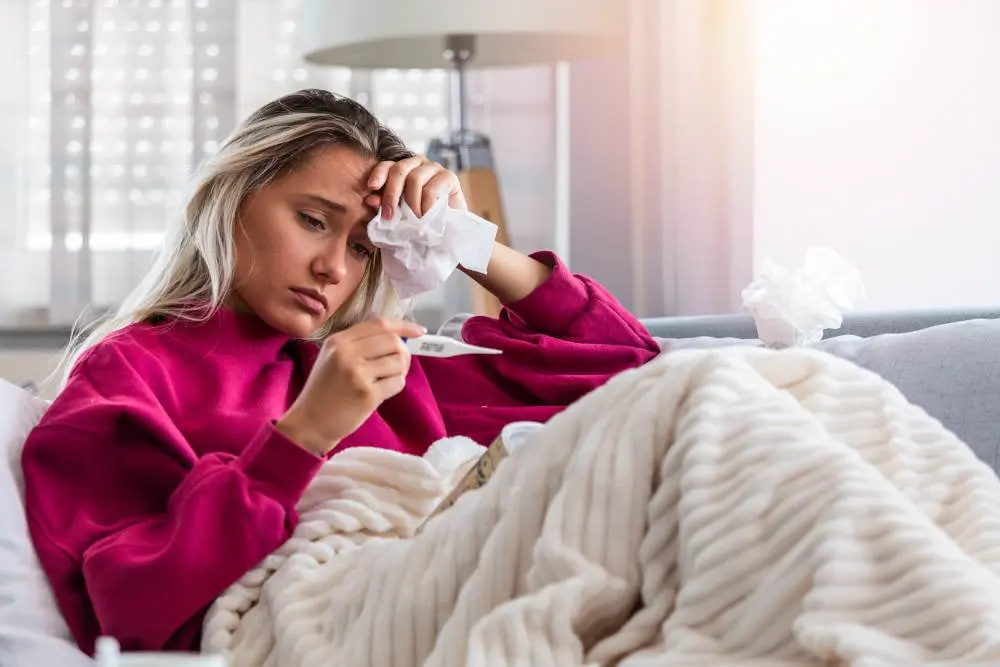The best way to reduce or prevent symptoms is to avoid or prevent mold when possible, limit outdoor activities when mold counts are high, reduce indoor humidity, which can lead to mold, and filtering the air in your home. But, while reducing your exposure to mold is often the simplest solution, first you need to learn how to identify it.
What Does Mold Look and Smell Like?
Although there are over 1,000 species of mold in the United States, only a few dozen cause allergic reactions. Mold lives everywhere, indoors and outdoors, and inhaling spores can trigger allergic reactions year-round.
Mold spores, or seeds, are barely visible to the naked eye and can travel easily through the air. Large mold infestations can usually be seen, and they may have a musty smell. Mold growth can often look like spots, and can be many different colors, such as brown, green, yellow, and black. Although black mold is commonly thought to be worse, scientific evidence does not show that the color of mold indicates how dangerous it may be.1
Indoor mold tends to grow in dark, damp environments, such as bathrooms, kitchens, basements, and under sinks. While outdoors it tends to grow on rotting logs, fallen leaves, and compost piles.
What Is Black Mold?
Many species of mold are black in color. Although black mold exposure is commonly thought to cause more serious health concerns than other types of mold, there is no convincing scientific evidence that black mold is worse than any other type or color of mold.1
Certain molds are toxigenic, which means they produce toxins that can cause health problems. Toxigenic molds should be considered the same as other common molds that can grow indoors.1
If you suspect you have mold in your home, consult a professional mold removal service.
Indoors Versus Outdoors
Mold is a unique allergen in that it can be found both indoors and outdoors, unlike other allergens such as pets, tree pollen, dust mites, or hay fever, which are typically present in only one environment or the other.
Indoor mold tends to trigger allergies year-round. Mold spores from outside can enter your home through open windows, doors, and ventilation systems, or by attaching to clothing or shoes and then carried indoors. If spores reach an area where there is excessive moisture indoors, such as with a roof leakage or a flood, mold can grow. Mold grows on many surfaces and materials, such as wood, cardboard, paper, dust, paint, wallpaper, insulation, drywall, carpet, fabric, and upholstery.1
Outdoor molds tend to cause allergies at a certain time of year and are often found growing on rotting logs, fallen leaves, and compost piles. Mold spores are most common from July to early fall, which can cause seasonal allergies.2
You can learn more about indoor versus outdoor allergies on our seasonal vs. year-round allergies page.
Symptoms of Mold Exposure
Mold allergies can affect people differently, and symptoms can range from mild to severe.
Common symptoms of mold allergies are:
Runny nose
Sneezing
Nasal congestion
Cough
Postnasal drip
Itchy eyes, nose, and throat
Watery eyes
Skin rash
Sometimes mold allergies can trigger asthma symptoms in people with allergies.3 These symptoms can include:
Wheezing
Coughing
Shortness of breath
Chest tightness
Sleeping problems caused by shortness of breath, coughing, or wheezing
If you are having severe symptoms or difficulty breathing, see a doctor immediately.
How To Get Rid of Mold and Prevent Mold Allergies
Many different types of mold can cause allergic reactions. To prevent mold allergies, consider following these tips:4
Reduce humidity and eliminate sources of dampness, such as basements, leaks, and other damp areas indoors.
Properly ventilate indoor living spaces.
Use ventilation fans or open windows and doors while showering or bathing.
Use a dehumidifier to reduce humidity indoors below 50%.
Filter your air with an air conditioner or a high-efficiency particulate air (HEPA) filter that can trap mold spores from outdoors before they are circulated into indoor air.
Change furnace and air conditioner filters regularly, and clean air ducts.
Do not use carpets in bathrooms and basements.
Make sure groundwater drains away from your home.
Keep plant containers clean and dry.
Get rid of old books and newspapers, especially if left in damp places such as basements.
Use a mask if you are gardening or disturbing plant material or grass.
Pay attention to mold spore counts in your area, and avoid outdoor activity when counts are high.
If your indoor allergy symptoms persist, it may also help to understand some of the other causes of indoor allergies and how to help prevent them.
Mold Allergy Treatments
If you have mold allergies, take precautions to reduce your indoor and outdoor mold exposure if possible.
If avoiding exposure is not possible, consider BENADRYL® oral medicines for relief from your mold allergy symptoms.
For adults, BENADRYL® Allergy ULTRATABS® Tablets with Diphenhydramine can help relieve symptoms such as runny nose, sneezing, itchy or watery eyes, and itching of the nose or throat.
For children ages 6 years and older, Children’s BENADRYL® Allergy Plus Congestion Medicine can help relieve mold allergy symptoms such as runny nose, sneezing, itchy or watery eyes, itching of the nose or throat, and stuffy nose.
References
Centers for Disease Control and Prevention. Basic Facts about Mold and Dampness. August 11, 2020. Accessed from: https://www.cdc.gov/mold-health/about/
Asthma and Allergy Foundation of America. Mold Allergy. October 2015. Accessed from: https://www.aafa.org/mold-allergy/
Mayo Clinic. Mold Allergy. June 21, 2021. Accessed from: https://www.mayoclinic.org/diseases-conditions/mold-allergy/symptoms-causes/syc-20351519
Centers for Disease Control and Prevention. You Can Control Mold. July 17, 2020. Accessed from: https://www.cdc.gov/mold/pdfs/you_can_control_mold.pdf


